What are Anorexiants?
- Short-term weight-loss programs and medicines for extreme obesity.
- Affect the patient by limiting calorie intake.
- Have a cognitive-behavior effect.
- Active substances include phentermine, benzohetamine, diethylpropion, phendimetrazine tartrate, and lorcaserine.
- Over 2.7 million patients are subscribed anorexiants.
Obesity is one of the major health problems plaguing the USA and the world. According to Health Data, over 160 million Americans are either obese or overweight. 75% of American men, 60% of American women, and 30% of children under the age of 20 are experiencing weight problems (Murray, Marie, & Mokdad, 2018). Overweightness and obesity are considered gateways to various diseases of the digestive tract, cardiovascular system, skeletal-muscular system, hormonal system, and many others. Anorexiants are a pharmacological tool used to treat extreme cases of obesity. They work on different principles, as some limit calorie intake, others serve as lipase inhibitors or serotonin agonists, or have mixed functions (Woo & Robinson, 2015). The purpose of this presentation is to examine the pharmacology and pharmacological effects of popular anorexiant substances.
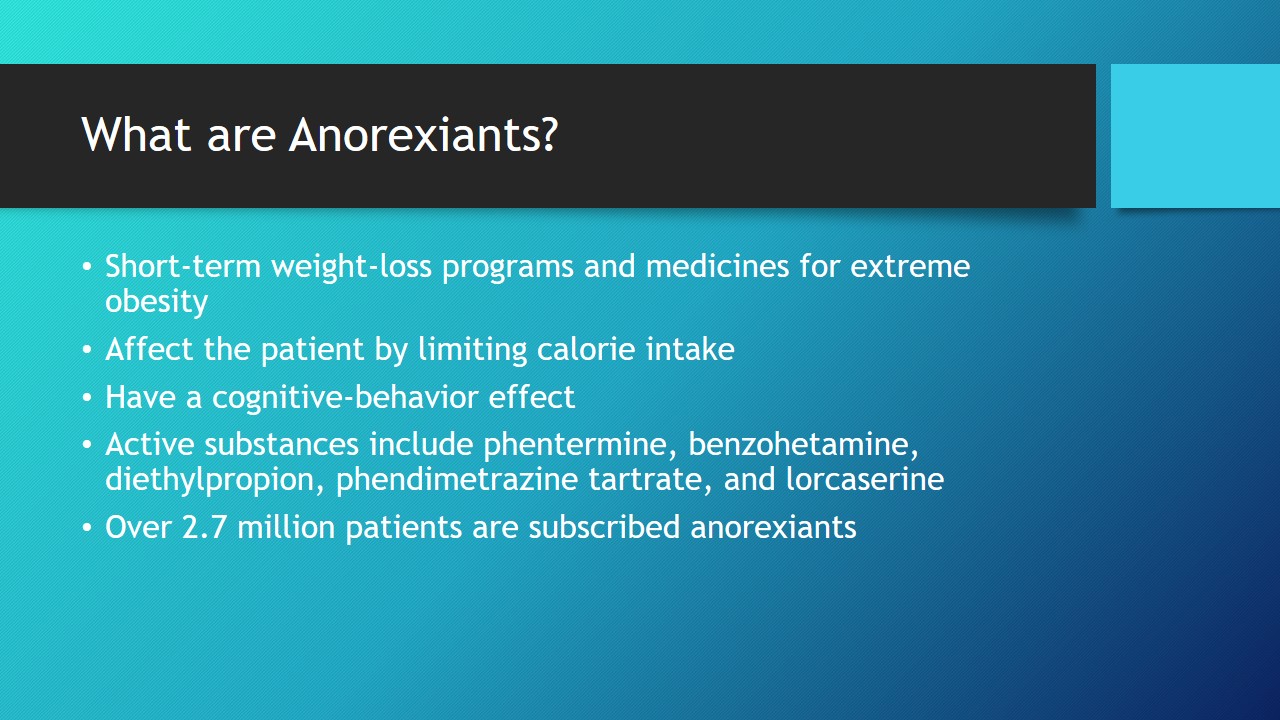
Pharmacodynamics
- Stimulate satiety centers in hypothalamus.
- Act through noradrenergic, dopaminergic, or serotonergic pathways.
- Activate 5-HT2C receptors.
- Exact mechanisms of action are not fully understood.
The majority of anorexiants affect the patient’s brain by activating its satiety centers and working on a hormonal level, affecting the levels of dopamine and serotonin in the patient’s body (Woo & Robinson, 2015). As a result, the person’s mind is tricked into not feeling hunger. This helps control hunger urges and force the body to consume excessive fats as sources of energy, as, although the mind thinks it is not hungry, cells, tissues, and organs still need energy to function. The exact mechanisms of action for anorexiants are not fully understood and they are typically used for short-term interventions in order to avoid various side-effects associated with the medicine (Woo & Robinson, 2015).
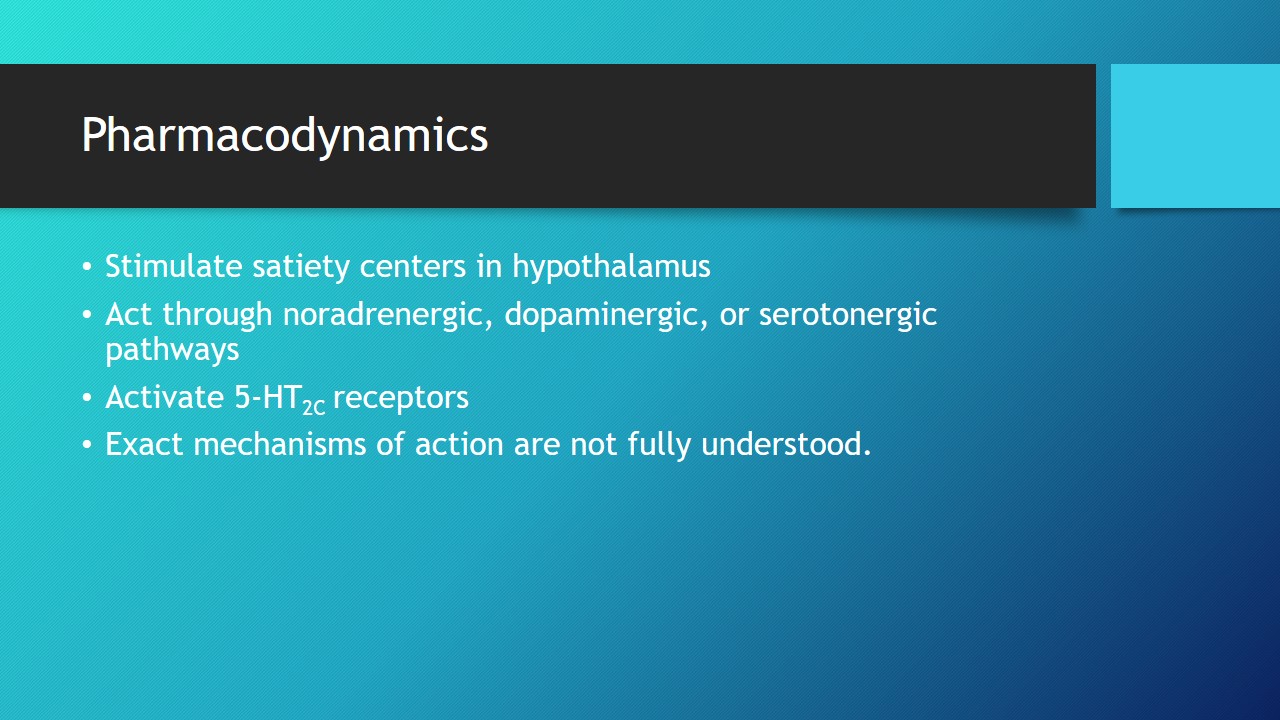
Pharmacokinetics
- Absorption and distribution:
- Absorbed in stomach and smaller intestine;
- Lipid-soluble substances;
- Cross the placental barrier and the blood barrier;
- Metabolism and excretion:
- Metabolized in the liver;
- Excreted through kidneys;
- Half-life period of 8 to 20 hours.
Anorexiants are designed to quickly get absorbed into the bloodstream for their effects to take place. Its metabolism times took between 4 to 6 hours after the drugs have been absorbed and distributed to cells (Woo & Robinson, 2015). Lorcaserin, however, reaches its peak in 1.5-2 hours and has a half-life period of 11 hours (Woo & Robinson, 2015). Phendimetrazine tartrate has a variable half-life between 2 and 10 hours, depending on the concentration and various other factors. It can be concluded that most of these drugs have a duration of 8 to 12 hours, which warrants a 2-3 times a day intake (Woo & Robinson, 2015).
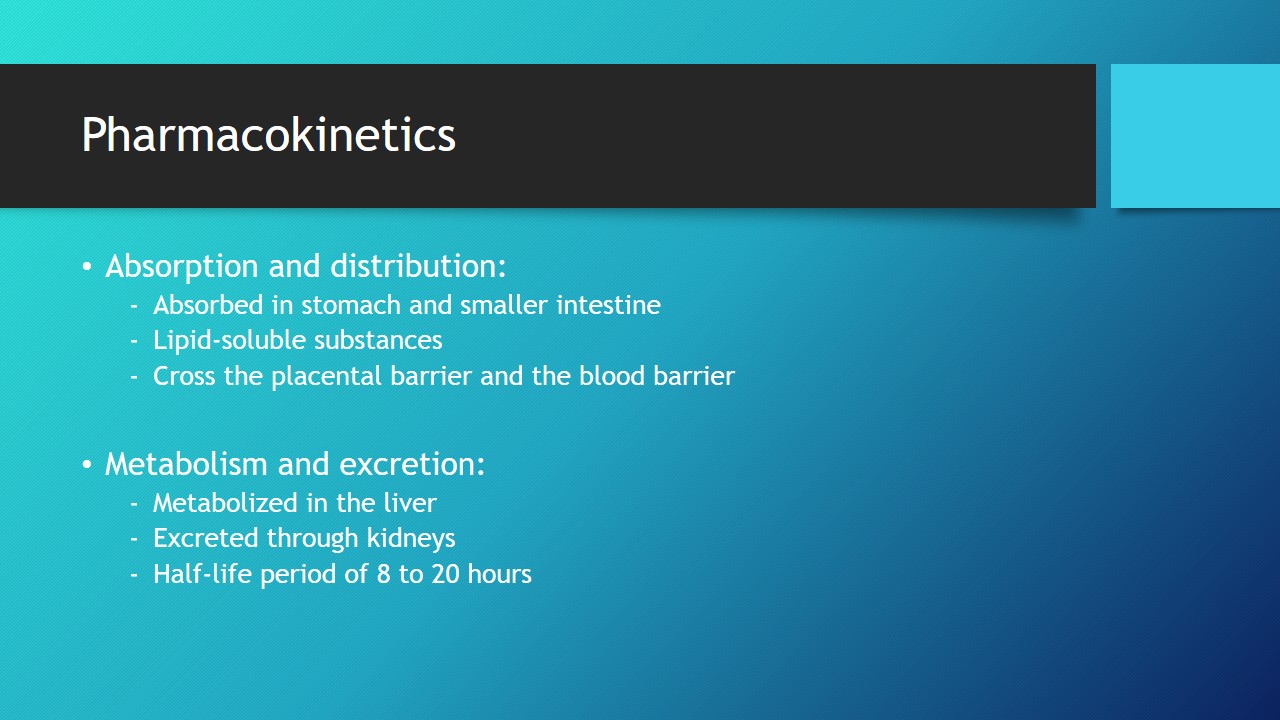
Pharmacotherapeutics
- Precautions and contraindications:
- High risk of tolerance and dependence;
- Cross-tolerance to alcohol and other drugs;
- Affects insulin levels;
- May develop serotonin syndrome.
- Adverse reactions:
- CNS overstimulation;
- Headaches;
- Stomach-related issues, vomiting, loss of appetite;
- Development of psychiatric disorders.
- Drug interactions:
- Can cause a hypertensive crisis when used with other anorexiants and MAO inhibitors;
- May cause a serotonin syndrome when used with other serotonin agents;
- No adrenergic blockers.
- Clinical use and dosing:
- Up to six months of treatment;
- Utilization of the drug must be paired with drug-free periods;
- Do not utilize in the evening.
Anorexiants are very dangerous substances, which is why they are used only for a limited period of time (Woo & Robinson, 2015). They are particularly dangerous to individuals with past or present cases of alcohol and drug abuse. The effects of the drugs are amplified to dangerous levels when in contact with these substances. Due to effects on insulin and serotonin levels, anorexiants may not be prescribed to individuals suffering from diabetes or related diseases, which require the use of drugs that affect the levels of these hormones. The patient may develop a plethora of adverse reactions to anorexiants ranging from CNS overstimulation effects, such as dizziness, loss of control, headaches, changes in bodily functions and even psychiatric disorders (Woo & Robinson, 2015).
Anorexiants have plenty of interactions with other drugs commonly prescribed for diseases that are developed during obesity. Namely, these are serotonin agents and adrenergic blockers, which are used to treat diabetes and hormonal disorders. In addition, anorexiants cannot be taken in conjunction with one another, as they could provoke a hypertensive crisis (Woo & Robinson, 2015). The treatment can last up to 6 months, though normally it does not take longer than three. To avoid addiction, anorexiants are used for periods up to 2-3 weeks, followed by drug-free periods. Using anorexiants in the evening is not recommended, as they could provoke insomnia.
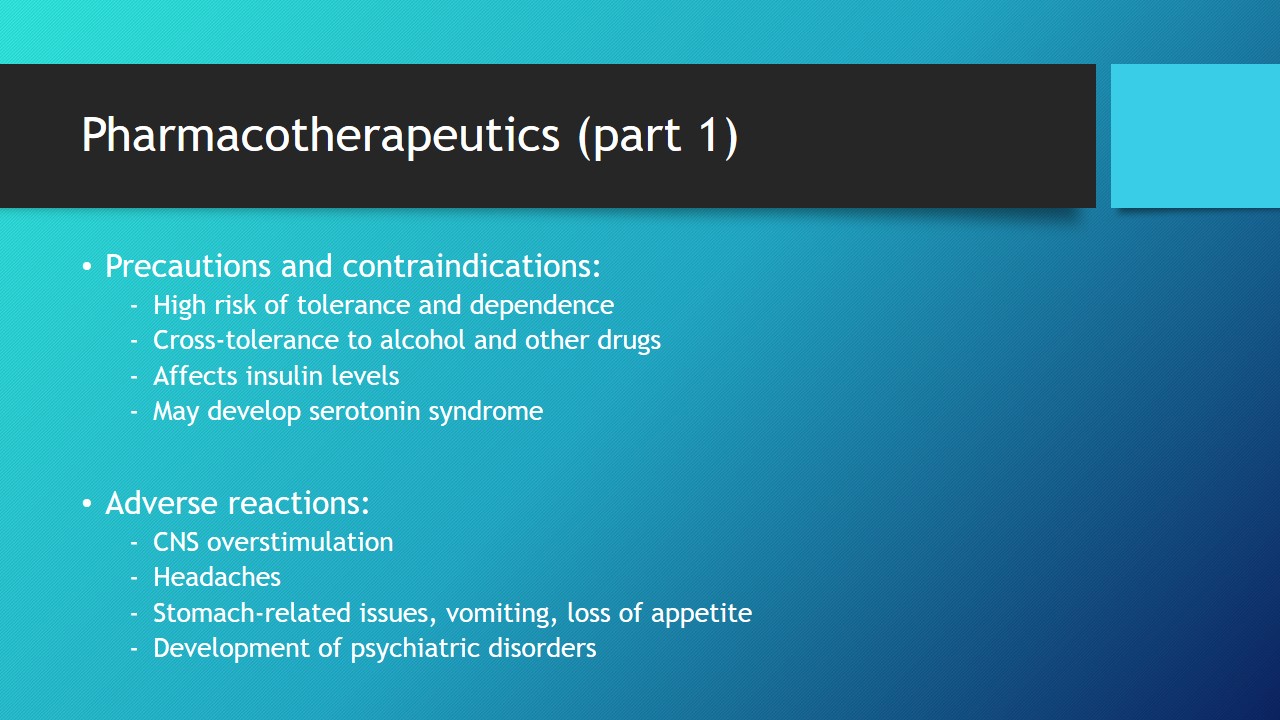
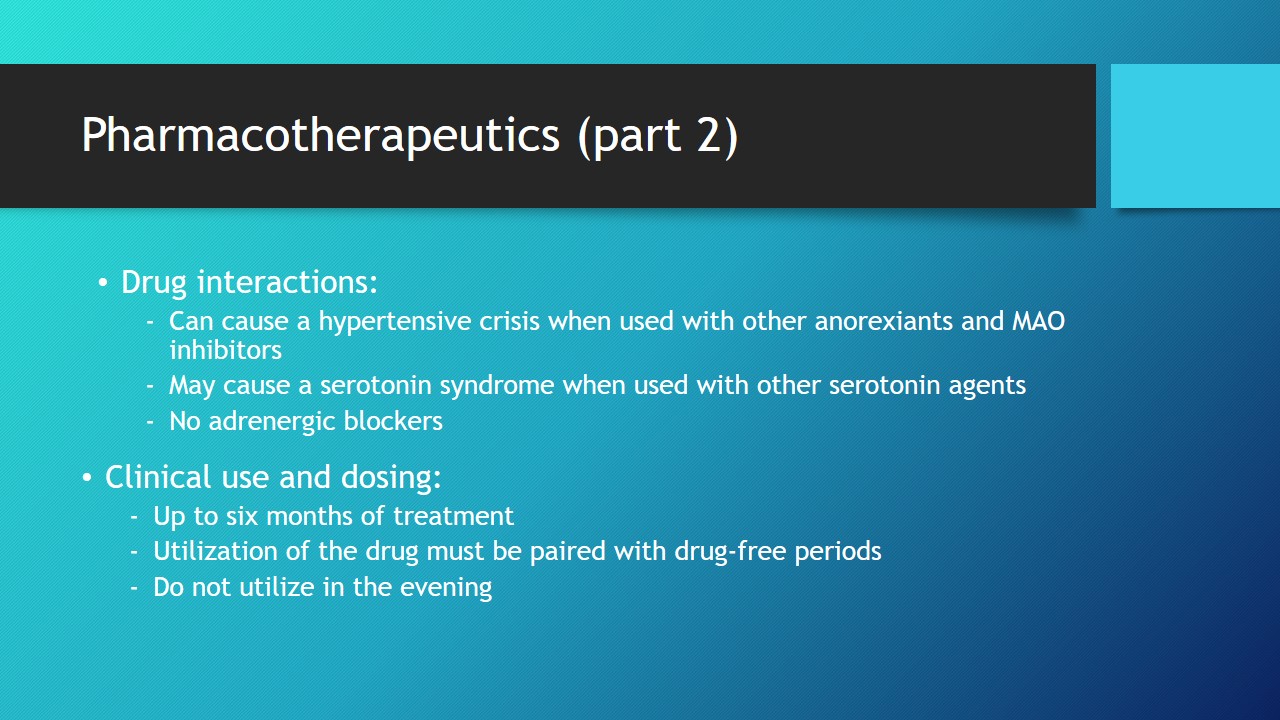
Conclusions
- Anorexiants are very situational drugs used to treat morbid obesity.
- They cannot be used for prolonged periods of time.
- Adverse reactions and interactions with other drugs make them unusable for diabetic patients.
- Numerous side-effects make the drug potentially dangerous.
Anorexiants are very situational drugs for a variety of reasons. The FDA has required a ban on several anorexiants, such as aminorex, phenylpropanolamine, fenfluramine, and ephedrine due to pulmonary hypertension issues (Woo & Robinson, 2015). Many of the existing drugs have similar concerns related to them, which heavily regulates their use. Although useful for treating extreme cases of obesity, they are situational and often bring more harm than good. Thus, the prescription of anorexiants should be reserved for instances when the patient’s body mass needs to be quickly and effectively reduced, in order to avoid further complications.
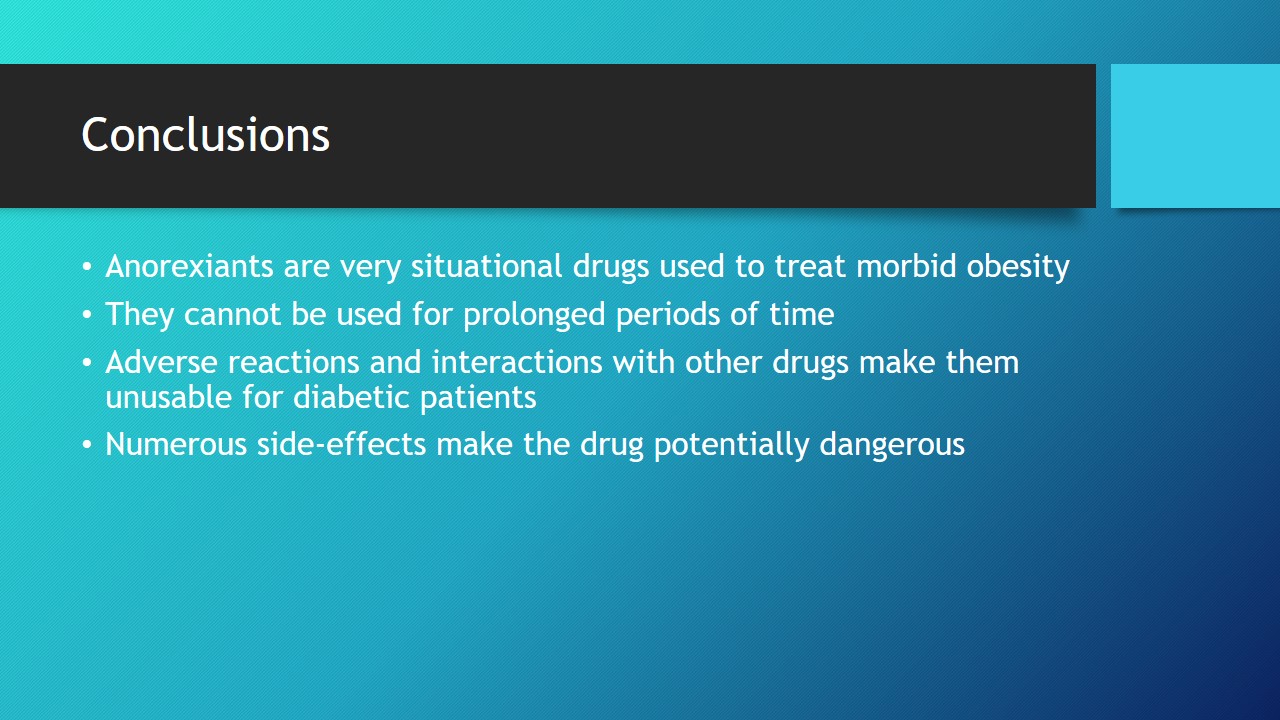
References
Murray, C. J. L., Marie, N., & Mokdad, A. (2018). The vast majority of American adults are overweight or obese, and weight is a growing problem among US children. Web.
Woo, T. M. & Robinson, M. V. (2015). Pharmacotherapeutics for advanced practice nurse prescribers (4th ed.). New York, NY: DavidPlus.